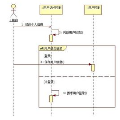The real life time series are usually nonstationary, bringing a difficult question of model adaptation. Classical approaches like GARCH assume arbitrary type of dependence. To prevent such bias, we will focus on recently proposed agnostic philosophy of moving estimator: in time $t$ finding parameters optimizing e.g. $F_t=\sum_{\tau<t} (1-\eta)^{t-\tau} \ln(\rho_\theta (x_\tau))$ moving log-likelihood, evolving in time. It allows for example to estimate parameters using inexpensive exponential moving averages (EMA), like absolute central moments $E[|x-\mu|^p]$ evolving with $m_{p,t+1} = m_{p,t} + \eta (|x_t-\mu_t|^p-m_{p,t})$ for one or multiple powers $p\in\mathbb{R}^+$. Application of such general adaptive methods of moments will be presented on Student's t-distribution, popular especially in economical applications, here applied to log-returns of DJIA companies.
翻译:真实世界中的时间序列通常是非平稳的,这带来了模型适应的难题。传统的方法(如 GARCH)假设任意的依赖结构。为了避免这种偏见,我们将聚焦于最近提出的不可知哲学的移动估计器:在时间 $t$ 找到优化 $F_t=\sum_{\tau<t} (1-\eta)^{t-\tau} \ln(\rho_\theta (x_\tau))$ 的参数,其中 $F_t$ 是随时间变化的移动对数似然函数。例如,可以使用廉价的指数移动平均(EMA)估计参数,如 $E[|x-\mu|^p]$ 随时间发展的绝对中心矩 $m_{p,t+1} = m_{p,t} + \eta (|x_t-\mu_t|^p-m_{p,t})$,其中 $p\in\mathbb{R}^+$。本文将在 Student's t-分布中应用这种通用自适应矩方法,该分布在经济应用中尤其流行,本文使用它处理道琼斯工业平均指数公司的对数收益率。



